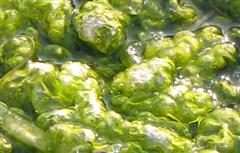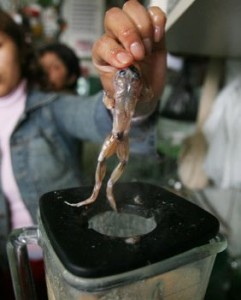Creation: Abiogenesis Part II

A Sunday guest post by my brilliant husband, Gregg.
Every Sunday, my clever husband offers me a “day of rest” by writing posts on the subject of his primary ministry. This is a topic that is gaining more and more attention in our modern culture. The topic, Creationism vs. Darwinism, is a subject that has broad reaching scientific, social, and metaphysical implications. He chooses to conclude each post with a message intended to hearten and bolster believers. However, for believers and non-believers alike, the primary purpose is to present scientific, historical, logical, and/or sociological data in an empirical fashion, as much as possible written in layman’s terms, and in a format suitable for supplementing any homeschool curriculum whether you choose to believe the Biblical account — or secular guesses — about the origins of human life on earth.
A Darwinian Primer
The 6 types of evolution taught in the average public school, the first 5 being types of Darwinian evolution, and the last being simple modifications or changes within kind and not even really “evolution” are:
- Cosmic evolution
- Stellar evolution
- Chemical evolution
- Abiogenesis—Life from non-life
- Macro-evolution
- Micro-evolution (Changes within kind – not evolution)
Abiogenesis Reloaded
In previous Sunday posts, I documented the impossibilities of Cosmic evolution, Stellar evolution, and Chemical evolution. I then presented a comprehensive series of posts documenting that life on earth simply cannot have been around for billions or millions of years based on numerous scientific facts.
Last Sunday, I explained the basics of the Darwinist belief in abiogenesis, recently re-packaged and re-branded and re-labeled to be called biopoiesis, or whatever other new and improved authoritatively scientific sounding jargon they want to call their religious belief in spontaneous generation.
If you do not have that context, I encourage you to select the CREATION category and read through all of the previous posts. I pray that doing so will be a blessing to you.
What is Abiogenesis?
 Abiogenesis is the notion that if you assemble all of the base components you need in order for life to exist under the ideal conditions, that life will simply happen. The context of this so called theory is that all of the base components needed in order for life to exist, along with all of the ideal conditions, along with energy, came together randomly and exclusively by way of undirected processes long ago and far away.
Abiogenesis is the notion that if you assemble all of the base components you need in order for life to exist under the ideal conditions, that life will simply happen. The context of this so called theory is that all of the base components needed in order for life to exist, along with all of the ideal conditions, along with energy, came together randomly and exclusively by way of undirected processes long ago and far away.
In short, Abiogenesis, while a really authoritative and scientific sounding word, is really just a fairy tale.
Before I get pretty specific about the science, let me just speak from the heart using what we used to call common sense. Every jar of peanut butter is packed — PACKED — with proteins and amino acids, oils, tissues, organic compounds — it is a virtual jar of primordial ooze! Yet, oddly, brand new life forms never spontaneously spring into existence out of the peanut butter — otherwise, I dare say you would use a lot more caution every time you opened the lid! But perhaps that isn’t a fair comparison.
 Let’s take a frog — a living frog. Obviously, a living frog has every possible component needed to sustain life since, you know, it IS alive. In addition, a frog is a fairly simple organism as organisms go. (All forms of life are ridiculously complex, so I confess to some tongue-in-cheekiness just now.) Anyway, starting with a frog, let’s toss him in a blender and hit puree.
Let’s take a frog — a living frog. Obviously, a living frog has every possible component needed to sustain life since, you know, it IS alive. In addition, a frog is a fairly simple organism as organisms go. (All forms of life are ridiculously complex, so I confess to some tongue-in-cheekiness just now.) Anyway, starting with a frog, let’s toss him in a blender and hit puree.
Now, please, if it isn’t too much trouble, go ahead and recreate the necessary ideal conditions and apply the proper energy until the frog is once more living. The only restrictions I will apply to this quest are, if you wouldn’t mind terribly, that the conditions you create must be realistic. In other words, it must have been possible for those exact same conditions to at least theoretically exist through purely random chance and undirected processes at some time in the past.
Too difficult? I see.
How about if I remove the restriction? How about if you can DESIGN a perfect environment and ENGINEER apparatus to reanimate the frog even if those things clearly could never have existed in nature and it is absolutely impossible that they would ever come about by undirected random processes? How about it?
Still too difficult? Oh.
Well, how about if you just use the pureed frog goo as the starting point, the base foundation, to create ANY LIVING THING, not necessarily a frog. No? Well, maybe not even REALLY, then. Maybe just credibly in theory create something living. How long do you suppose that would take?
Never, you say? Is never the answer? Oh. Okay, then.
How about if you don’t start with organic compounds. Maybe just start with a rock, or sand, or seawater, or poisonous gases. Does that make the task somewhat less daunting?
Well, of course it doesn’t. The belief in abiogenesis is a religious belief that has absolutely nothing whatsoever to do with anything scientific or real. It is an article of faith in an impossibility because, if you are a Darwinist, the alternative is a Creator which is nightmarish to them.
I submit to you that nothing about the creation of life — any life — is spontaneous, accidental, or random. The universe and all of the laws of the universe conspire to actually make life an ANOMALY. On the universal scale, life is astonishingly and astoundingly rare. The notion that one can start with sand and seawater or poisonous gas and just add energy to form simple and correctly organized organic compounds, that one can further agitate those newly created compounds so that they, in turn, “naturally” and “spontaneously” generate full blown living things entirely as a result of random and undirected processes is — in a word — ridiculous.
The entire notion taught and touted in science classes and science textbooks every school day ISN’T EVEN SCIENTIFIC!
Welcome (Back) to the Dark Ages of Science
 People once thought that fruit flies spontaneously came forth from fruit, geese from barnacles, mice from dirty clothes, bees from dead calves, and so on. Notable scientists throughout history even believed in spontaneous generation. Copernicus, Galileo, Bacon, Hegel, and Shilling believed it, for example. Careful experiments by Spallanzani in 1780 — and ultimately by Louis Pasteur in 1860 right around the time of Darwin’s father shipped his shiftless son off on that famous voyage — totally disproved the foolish notion, and the average human being today reaps the benefit of simply knowing better.
People once thought that fruit flies spontaneously came forth from fruit, geese from barnacles, mice from dirty clothes, bees from dead calves, and so on. Notable scientists throughout history even believed in spontaneous generation. Copernicus, Galileo, Bacon, Hegel, and Shilling believed it, for example. Careful experiments by Spallanzani in 1780 — and ultimately by Louis Pasteur in 1860 right around the time of Darwin’s father shipped his shiftless son off on that famous voyage — totally disproved the foolish notion, and the average human being today reaps the benefit of simply knowing better.
However, Darwinian scientists and humanist acolytes still faithfully believe in spontaneous generation. Ironically, the late Isaac Asimov, a staunch atheist, summed it up very well.
“[Louis] Pasteur’s demonstration apparently laid the theory of spontaneous generation to rest permanently. All this left a germ of embarrassment for [Darwinian] scientists. How had life originated after all, if not through divine creation or through spontaneous generation? …
“They [Darwinian scientists] are back to spontaneous generation, but with a difference. The pre-Pasteur view of spontaneous generation was of something taking place now and quickly. The modern [Darwinist] view is that it took place long ago and very slowly.”
—Isaac Asimov, Asimov’s New Guide to Science (1984), pp. 638-639. Brackets mine, emphasis his.
Darwinists faithfully believe in and dogmatically teach spontaneous generation. Think about the implications of that for a minute. Scientifically speaking, we are no longer on a journey of discovery. We are backtracking in an attempt to rationalize and justify a quaint notion that was utterly disproved over a century and a half in the past. Intellectually, scientifically, methodologically, and inevitably we are returning to the Dark Ages!
In contrast, Rudolf Virchow’s aphorism ‘omnis cellula e cellula‘ [every cell arises from a preexisting cell] ranks with Louis Pasteur’s ‘omne vivum e vivo‘ [every living thing arises from a preexisting living thing] as among the most revolutionary generalizations of biology. True science, actual biology, teaches biogenesis, which means, in general, that life can only come from life and, specifically, that one kind of species can only come from living parents of the same kind of species. For instance, some kind of male dog and some kind of female dog will only ever bring forth some kind of dog. This is modification within kind. That is real science.
WINNER(S) of the THE GALACTIC LOTTERY!
In order for life to occur via the Darwinian myth, DNA and proteins would have to link up with ease into very long, extremely complicated, and highly specific coded strings containing extremely specific information. In addition, thousands of other complicated chemical combinations would have to be accomplished within the space of a few eye-blinks. How long could you live without an ability to consume nutrients? How long could you live without the ability to process those nutrients into useful fuel for your tissues? How long could you live without the ability to eliminate waste? The list goes on and on. The situation is no different for even the simplest forms of life. Everything would have to suddenly be in place — instantly in fact. In structure, arrangement, coordination, coding, chemical makeup, feeding, elimination, respiration, circulation, all of it. And everything would have to work perfectly right at the start. There is absolutely no room for error.
 In order for life to arise from non-life by randomness and pure chance, that first life form would be the luckiest living thing in the history of life in the universe. All the parts would suddenly have to exist, in all of their nearly infinite complexity, with all of their interdependent systems tightly and perfectly integrated, without even a single element of waste or error in the (randomly arrived upon) design, and all would have to essentially and immediately function with absolute perfection.
In order for life to arise from non-life by randomness and pure chance, that first life form would be the luckiest living thing in the history of life in the universe. All the parts would suddenly have to exist, in all of their nearly infinite complexity, with all of their interdependent systems tightly and perfectly integrated, without even a single element of waste or error in the (randomly arrived upon) design, and all would have to essentially and immediately function with absolute perfection.
Additionally, the formation of amino acids, protein, DNA, enzymes, and all the rest needed to form the first living creature, had to occur within an extremely short amount of time. It would all have had to occur within far less than a single generation, possibly less than a few minutes. Basically, it would have had to occur within a single moment. Otherwise, in the very next moment the organism would die. Literally millions of perfectly functioning systems had to come together all at once.
Mathematicians have calculated the odds of this taking place and those odds are 1 chance in the number 40,187 followed by six hundred trillion trillion trillion zeros. That second number is more atoms, by the way, than there are in the entire known universe. That first life form would have been the lucky winner of the galactic lottery.
Once that life form won against those clearly impossible odds, it then would have to be able to reproduce right away. In order to propagate life, it would have needed all of the DNA coding and fission ability to divide and copy itself asexually.
Just as an aside, there is really no Darwinian explanation for the predominance of the separate and distinct sexes in living organisms today. Having two sexes provides absolutely no survival or fitness advantage when measured using the Darwinian evolutionary yardstick. It would be much more evolutionarily advantageous for all forms of life to reproduce asexually. If we were all one sex, it would also “fit” the Darwinian abiogenetic fairy tale model of how life originated much more nicely since there is no practical explanation for how or why independent sexes evolved.
But they DO exist — sooooo.
Maybe that first life form had to have the ability to reproduce sexually — which would require a mate with which to produce offspring. That means that there would have had to have been at least two galactic lottery winners in that moment, co-located near enough to each other for reproduction to occur, and each “randomly” appearing with interdependent yet perfectly compatible sexual apparatus — and they had to like each other, you know, or each would have had to have been “randomly” encoded and arranged such as to have a biological and instinctive imperative to mate with each other. This also bumps the odds against all this occurring up by adding another million trillion trillion trillion trillion zeros to that second number.
The Truth
It is absolutely amazing just how much effort, thought, and scientific endeavor in the last 150 years has been diverted to an almost desperate and utterly fruitless effort to prove true the ramblings of a 19th century British eccentric who spent his life either nursing his digestive problems, dealing with his many phobias, pondering why his children suffered from various mental deficiencies after he married his own first cousin, or simply wondering how life might possibly have sprung into existence without having been created by God.
In order to believe in Darwinism, one must first have a desire to abandon the quest for truth. In pure terms, the quest for truth will inevitably lead to abandoning Darwinism and all of its fallacious trappings. Even an intellectually honest atheist would have to admit that Darwinism is just plain silly even if that atheist refused to acknowledge the logical alternative.
I pray that this Sunday post has blessed you.
God Bless you and yours.
Gregg
Resources:
Additional Posts dealing with Creation and Darwinism


I feel deeply embarrassed by this. Please attempt to educate yourself from sources other than Kent Hovind.
Can an Evangelical Christian Accept Evolution?
Also;
http://www.blog.beyondthefirmament.com/video-presentations/science-and-christian-education/
http://www.blog.beyondthefirmament.com/video-presentations/christianity-biology/
“Abiogenesis…is really just a fairy tale” <– Perhaps you mean "fairy tale" in the sense of "a far-fetched sequence of events" and that the spontaneous formation of life from non-living molecules is, at best, a relatively rare phenomenon in the universe. However, the scientific study of the origin of life is not a fairy tale by any conceivable definition.
Your so called "common sense" examples of abiogenesis in peanut butter and pureed frog are anything but sensible. Anyone with an honest interest in abiogenesis would read some of the scientific literature on the topic and discuss published ideas about the types of environmental conditions that might support abiogenesis. Anyone writing a rather long commentary on the topic should know enough about abiogenesis to be aware that peanut butter and pureed frog are absurd suggestions that do nothing to advance an honest discussion of the topic, yet the commentary on peanut butter and pureed frog was initiated by calling for "common sense". No "common sense" discussion of a scientific field ignores the actual content of that scientific discipline in favor of fanciful and irrelevant distractions.
"The belief in abiogenesis is a religious belief that has absolutely nothing whatsoever to do with anything scientific or real." <– I think you are trying to discuss the fact that exploration of abiogenesis is a current scientific endeavor. Belief in the possibility of abiogenesis is really the adoption of a working hypothesis. Motivation for study of abiogenesis comes from observation of reality: our planet formed about 4.5 billion years ago from non-living materials and then, later, chemical and fossil evidence for life appears in the geological record. Scientific investigation of abiogenesis is a sensible and natural response to these facts.
"an impossibility" <– You call abiogenesis an "impossibility", but I do not see any real evidence to support this claim. I encourage you to publish your evidence for the impossibility of abiogenesis in a peer-reviewed scientific journal. If your "proof" stands up to peer review, you will surely win a Nobel prize and you will save many scientists from exerting further effort on the study of abiogenesis. Of course, if you actually have no objective evidence to support your claim then I will be tempted to conclude that your belief in the impossibility of abiogenesis is "a religious belief that has absolutely nothing whatsoever to do with anything scientific".
"In order for life to occur via the Darwinian myth…strings containing extremely specific information" <– Darwin never had any deep thoughts about the chemical origins of life, but neither he nor anyone else has ever made the kinds of claims about abiogenesis that are made in this blog post. If life did originate from random chemical reactions then the first genetic molecules were randomly assembled and not a source of "extremely specific information". Some randomly assembled early polymers might have happened, by chance, to facilitate the production of more polymers with similar structure. That type of chemical evolution is not difficult to imagine and forms the basis for ongoing research into the origins of molecular replication.
"the formation of amino acids, protein, DNA, enzymes, and all the rest needed to form the first living creature, had to occur within an extremely short amount of time. It would all have had to occur within far less than a single generation, possibly less than a few minutes" <– <a href="http://en.wikipedia.org/wiki/RNA_world_hypothesis"<One idea that is worth exploring is that the earliest form of life had no amino acids or proteins.
“It would be much more evolutionarily advantageous for all forms of life to reproduce asexually.” <– This is an interesting claim. Again, I encourage you to publish your supporting evidence. If you are correct then you have your second Nobel prize in the bag!
I am afraid I don’t believe you.
.
First: If you are a believer, then you already know better than to feel ashamed based on biblical instruction (Mark 8:38; Luke 9:26; Romans 1:16; Romans 10:11; Philippians 1:20; II Timothy 1:8; I Peter 3:16).
.
Second: If you are not a believer, then you have no real basis for feeling any “embarrassment” on my behalf either deep or otherwise, which means your words would be merely an attempt to lay a foundation of a spiritual or intellectual superiority allowing you to look down your nose and tsk tsk me. And since that would be a grossly judgemental act on your part since you do not REALLY know me, and again something a believer would want to avoid, I’m afraid I don’t believe that either.
.
Third: I do not cite Kent Hovind. In this post, I cited Spallanzani, Pasteur, Azimov, Virchow, and many other citations in other posts — none of them Hovind. Googling Kent Hovind’s name nearly caused my computer to melt from the absolutely vitriolic and occasionally pornographic outpouring of hatred Hovind seems to have inspired among Darwinists.
.
As an aside, I actually find the hatred to be a real testimony considering the social dynamics of truth. Maybe I’ll post on that topic on some future Sunday. According to my worldview, Hovind looks like he’s said some things that might have gotten him cruxified a few thousand years ago.
.
But, since I did not cite Hovind in this post — or in any other post — I can safely assume that your equivocation of me to him is no more than a rather ham-handed attempt at character assassination.
.
Thank you for the links to the other sites which are clearly relevant to the discussion. However, my advice would be to get over your deep embarrassment, drop the attempts at insult and belittling, and just speak your mind without the rhetoric and without letting others speak for you. There is risk involved in doing so. It takes courage. Your very own genuine thoughts will be under real scrutiny and they may be subject to debate, possibly even hotly contested. I encourage you to take the risk and speak for yourself from the heart as I, and others, may be interested in what you have to say.
By “fairy tale” I mean fictitious story set in a fantastical world and often involving magical events to drive the plot.
.
Peanut butter and frog goo are examples of extreme hyperbole and anyone without an ax to grind would recognize that without feeling the need to march an army of strawmen into the arena of the debate.
.
You say, “Belief in the possibility of abiogenesis is really the adoption of a working hypothesis. Motivation for study of abiogenesis comes from observation of reality: our planet formed about 4.5 billion years ago from non-living materials and then, later, chemical and fossil evidence for life appears in the geological record. Scientific investigation of abiogenesis is a sensible and natural response to these facts.”
.
Respectfully, these aren’t facts. They are beliefs. There is strong evidence that the earth is much younger than 4.5 billion ears old. The so called “geologic column” does not actually exist anywhere on earth — except in text books and the imagination of ardent Darwinists. Were you to say something like, “Scientific investigation of abiogenesis is a natural response to these Darwinist beliefs” I would have no room to argue.
.
You say you do not see any real evidence to support my claim that abiogenesis is an impossibility and ask me to offer “proof” that it is impossible. This is a perfect example of an argument from ignorance in both form and function.
.
If you were to state that, say, men could once upon a time in a fantastical world long ago jump 1,000 feet into the air and land miles away without harm even though there is absolutely no evidence whatsoever that this can take place except that, you know, men can still jump a few feet in the air today. Then I declared that such a claim is, in a word, impossible — it would not be up to me to publish peer-reviewed texts to support the impossibility. The burden of proof is firmly on you to provide actual evidence that supports your silly idea.
.
May I gently suggest that it is up to Darwinists to prove the impossible? It is not up to me, or any other skeptic, to disprove the impossible. Such a position defies simple logic.
.
You say “Darwin never … made the kinds of claims about abiogenesis that are made in this blog post.” And you are mistaken.
.
While it IS true that Charles Darwin never wrote a single word about origins in his racist diatribe partially entitled “on origins,” he did hint and muse in a letter that was later edited and placed in print by his son, Francis Darwin: The life and Letters of Charles Darwin (1887 ed.), Francis Darwin, p. 202.
.
.
And this is essentially the foundation of all such Darwinist religious beliefs in abiogenesis, that life can magically spontaneously generate from non-living things via purely “natural” and random, undirected processes.
.
You dispute that extremely specific information would have to be present for life to exist but this point is really beyond argument. Randomly assembled polymers or crystals or bubbles contain repetative and patterned data, but they do not — and never can and never do — contain specific non-repeating information that exists and is quite necessary in all living things.
.
You say that the hypothesis that the earliest form of life had no amino acids or proteins is worth exploring. I say it is yet another Darwinian pipe dream, posited and put forth mainly because the evidence against abiogenesis — and the contradicting evidence that refutes it — consistent with it involving protiens and amino acids has reached critical mass with even early proponents abandoning the idea entirely. Miller?
.
You say, “It would be much more evolutionarily advantageous for all forms of life to reproduce asexually.” <– This is an interesting claim. Again, I encourage you to publish your supporting evidence.
.
I don't need to. I have reliable witnesses. Half the human race, in fact. Ask any woman who has ever carried a child what possible evolutionary advantage she is granted by bouts of morning sickness, backpain, sleeplessness, weakness, fatigue, and risk to her very own life during delivery — followed by months or years of dependancy by her child. Much more evolutionarily advantageous to spawn atop a few eggs and let survival of the fittest sort it out later, or to split into an exact copy of oneself. Simple logic.
.
You say, "If you are correct then you have your second Nobel prize in the bag!"
.
I appreciate the nominations and, yes, I'm sure I would. But the Nobel isn’t really the dynamite prize it once was.
It seems sensible to me, and not at all a pipe dream, to look for a way for abiogenesis to have occurred, and to investigate RNA when it seems that the combo of DNA and protein as a starting point was not working. That is the way science works.
.
In the 1800s scientists had the idea that organic molecules could only be made by living organisms, that it was impossible for chemists to make them. Should the chemists have given up trying on the basis that it was thought to be impossible? Should chemistry and biology have come to a grinidng halt in the early 1800s? What actually happened was that a scientist did figure how how to maunfacture urea, an organic molecule, which made it clear that organic molecules did not require living organisms for their synthesis.
.
If scientists start out with an idea and it turns out not to be correct, are they supposed to give up and say it’s impossible? Maybe the question has to wait until there is new technology. The door doesn’t have to be closed.
The investigation into RNA for abiogenesisis not an irrational leap from the previous investigations with protein and DNA. RNA is very involved with both DNA and protein, and RNA has the ability to act both as an information carrier and catalyst.
Read the article. The premise now is that neither RNA nor DNA were involved. In other words, no information created highly specific and ordered information without anything to record it upon.
.
Pipe dream.
Gregg,
I haven’t read the whole thing, but good for you for standing up for REAL science. And it makes me laugh a little because my husband has done the exact same thing. :)
(When I read your response I didn’t know what article you meant, or if you meant this essay, which particular section or sentence you meant. And I didn’t know which premise, or whose premise you meant. I thought you might be referring to the idea that instead of RNA the original nucleotide might have been one with a different type of molecule for a backbone, maybe a different sugar. But I didn’t see anything about that in your post.)
Simply brilliant !! Evolution is a complete waste of public money and is not scientific at all. Abiogenesis is a myth. Why are there attempts being made to block “Intelligent Design”; the only alternative to any kind of hypothetical evolution scenario, cosmic or biological ? It is another attempt by some, in the scientific community to stifle Intelligent Design — and refute the existence of a Creator.